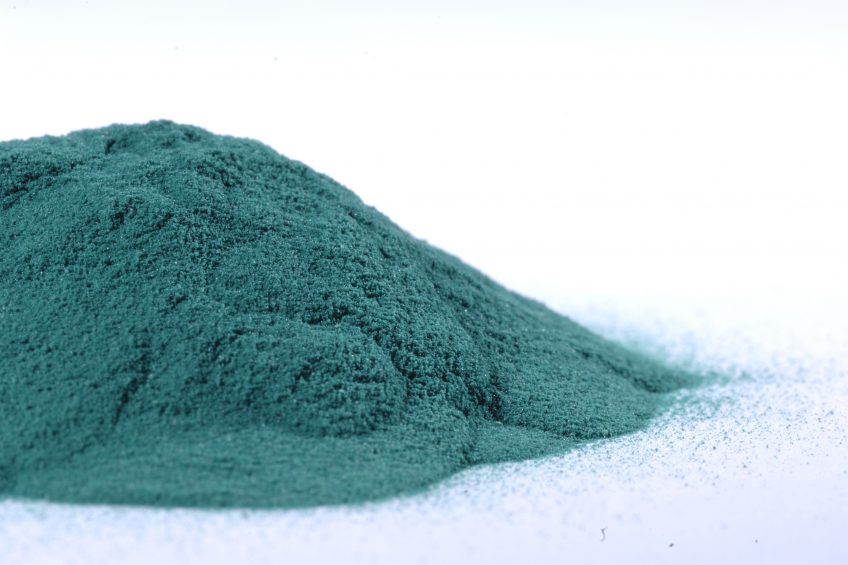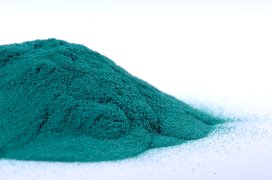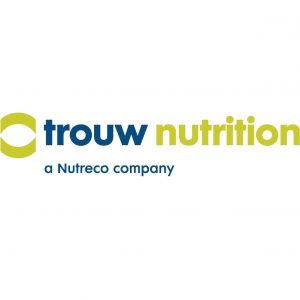Delivering more minerals into a pig’s bloodstream

Feeding trace minerals to pigs alone is not enough they also need to be absorbed by the animals. To achieve this purpose, hydroxy trace minerals have been developed. This ensures that more biologically active metal is absorbed into the bloodstream.
Commodity sulphate and oxide trace mineral sources have been utilised in commercial swine production since the late 40s and were followed by the introduction of chelated trace mineral sources in the 70s.
Furthering innovation in trace mineral nutrition, a team of US chemists developed hydroxy trace minerals in the early 90s. These newer type of minerals provide product purity and unique physiochemical properties. Therefore they are more effectively utilised by the animal, improving pig health and productivity and the producer’s bottom line. Following the acquisition of US based company Micronutrients by global animal feed company Nutreco, its animal nutrition company Trouw Nutrition included the hydroxy trace mineral product line in the Selko feed additive portfolio.

Hydroxy trace mineral sources have a crystalline structure (like a 3D matrix). This delivers many beneficial characteristics compared to other mineral sources.
Covalently bonded crystalline structure
Traditionally, minerals have been categorised as either organic or inorganic, based on whether or not they had a carbon-containing ligand. A newly defined category of trace minerals, known as hydroxy trace minerals, has a unique OH group that is covalently bound to the metal. This is what differentiates hydroxy trace minerals from other organic or inorganic minerals.
These ‘smart bonds’ create minerals that avoid unwanted interactions, which can either oxidise or bind to other ingredients. Hydroxy trace mineral sources have a crystalline structure (like a 3D matrix). This delivers many beneficial characteristics compared to other mineral sources. A primary advantage is the crystal’s very low solubility when exposed to a pH of 4.0 or greater. Limited solubility protects essential nutrients in the feed and prevents harmful, antagonistic reactions between nutrients and metal ions in a pig’s digestive tract.
Secondly, when hydroxy trace minerals are exposed to the low pH of the stomach, the metal ions contained within the crystals become soluble in a gradual manner, which improves the absorption and utilisation of the metal contained within the animal.
When feeding to meet the nutritional mineral needs of pigs, it must be understood that the supplementation of any trace mineral in the diet has no nutritional value until the metal is absorbed into the bloodstream. The combination of this new mineral’s low solubility above a pH of 4.0 and the sustained release of soluble mineral in the stomach ensures that more biologically active metal is absorbed into the bloodstream. Only then pigs can utilise the metal to drive the many physiological processes required to optimise health and performance. Research results clearly indicate that hydroxy trace minerals deliver more metal to the pigs’ bloodstream than commodity trace mineral sources.
Research projects around the world
To better understand the application and value of trace minerals in swine production, the creators of hydroxy trace minerals conducted more than 25 research projects with independent university and industry researchers around the world. This research has confirmed the requisite need for trace minerals in swine diets, but more importantly, they have highlighted the fact that different sources of trace minerals can provide significantly different results in the mill, the feed, the pig, and the environment.
One growing area of interest in swine nutrition is the supplementation of an optimised level of copper to maximise piglet performance. Numerous studies have demonstrated that copper sulphate (CuSO4) improves growth performance of pigs when fed at higher levels. Comparing hydroxy trace minerals with higher levels of copper sulphate in a series of experiments now shows the efficacy that can be obtained when lower levels of hydroxy mineral copper are fed in starter diets of piglets.
Trial in France
In the first trial, held in France in 2014, weaner pigs were fed diets supplemented with 155 ppm copper from the new hydroxy trace mineral or copper sulphate. Results show that copper from hydroxy minerals is more effective at promoting feed intake and weight gain in weaner piglets than copper sulphate. When leaving the nursery, pigs were 882 g heavier on average than pigs fed copper sulphate (Figure 1).
Figure 1 – Total weight gain over the entire weaner programme for pigs fed a basal diet, supplemented with one of two copper sources.

Looking in detail, there was no difference in the feed intake in the first 28 days after weaning. However, from day 28 to 42, piglets fed copper from hydroxy source (Selko IntelliBond C) ate more than pigs fed the copper sulphate treatment (Figure 2). Moreover, pigs tended to have a higher feed intake over the entire length of the trial. There was no difference observed in the daily gain for the first 28 days after weaning. However, the pigs grew more during the subsequent 14 days. Average daily gain was significantly greater over the entire period. Feed conversion ratio was not affected by the copper source. This study indicated that here improvement of weaner pig production was driven by an improved feed intake.
Figure 2 – Growth performance and feed intake of weaner pigs from 28 to 42 days fed a basal diet supplemented with either copper from hydroxy trace minerals* or copper sulphate.

Trial in Germany
During a second trial, in Germany in 2013, 192 piglets were assigned to six experimental diets formulated with 15, 100 or 150 ppm copper from two different copper sources (eight replicates per treatment). Results showed that piglets fed diets with 150 ppm copper from hydroxy trace minerals were 1.2 kg heavier (Figure 3) and had 8 points lower feed conversion than piglets fed diets with 150 ppm copper sulphate at the end of the trial.
Figure 3 – Final body weight of piglets fed increasing levels of copper from either copper from hydroxy trace minerals* or copper sulphate.

Increasing the copper concentration of the diet resulted in greater body weight, average daily gain and average daily feed intakes from one to 20 days after weaning. Additionally, feeding hydroxy trace minerals instead of copper sulphate improved feed conversion both from 21 to 55 days after weaning and over the entire length of the trial (Figure 4). Faecal scores were unaffected by copper source or copper inclusion level.
Figure 4 – FCR is decreased when fed 150 ppm copper from hydroxy trace minerals* instead of copper sulphate (1.52 vs. 1.60 respectively; ‘p<0.05’).>

Breakpoint study
Finally, a breakpoint study, in the US, shows exactly what levels of hydroxy trace minerals prove to have similar growth responses to high levels of copper sulphate (200 ppm). Daily gain of weaner pigs increased with increasing levels of Selko IntelliBond C until a breakpoint of 143 ppm was reached (Figure 5). This analysis showed that hydroxy trace minerals can replace 200 ppm CuSO4 at a rate of 107.5 ppm and that daily gain could be further improved at an inclusion rate of 143 ppm of the hydroxy trace mineral.
Figure 5 – Breakpoint analysis of dietary copper from hydroxy trace minerals* with daily gain as a dependent variable. The horizontal dotted line shows the daily gain reached with 200 ppm CuSO4.

The results from these trials show it is possible to safely replace copper sulphate with copper from hydroxy trace minerals, even at lower levels. A similar performance can be achieved with lower levels of copper in the diet. Doing this could decrease mineral cost of the feed and decrease mineral losses in the environment. Conversely, using the same levels of hydroxy trace mineral copper as copper sulphate results in better performance.
In summary, the conclusive evidence from these data demonstrate hydroxy trace minerals’ capability to improve production performance of the weaner pig. There is potential to decrease environmental copper excretion by reducing copper levels in the diet without affecting performance.
Author: Kevin Perryman, director Selko IntelliBond International Business, Trouw Nutrition
 Beheer
Beheer





 WP Admin
WP Admin  Bewerk bericht
Bewerk bericht